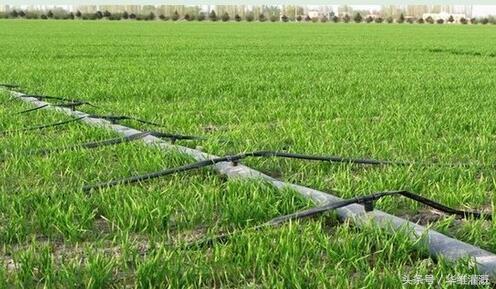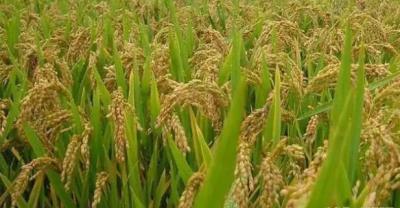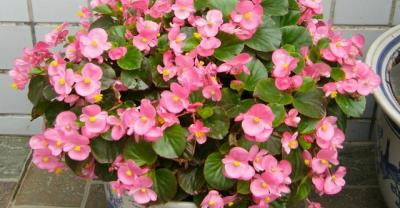Planting Management of Rice growth period Water and Fertilizer demand
We usually divide a rice growth cycle into seedling stage, green stage, tillering stage, long panicle stage (panicle differentiation stage) and fruiting stage. Most of the seedling stage has grown up in the seedling stage. The period of waiting for slow seedlings to survive after separate planting and transplanting is called the period of returning to green. After returning to green, rice begins to tiller (some begin to tiller in the seedling field), and then panicle differentiation (jointing). It is the vegetative growth period of long roots, stems and leaves, and the reproductive growth period of long panicles, flowers and grains.

Seedling stage
The seedling stage is the stage from seed germination to clover stage, which is generally divided into seed germination stage and seedling growth stage. The temperature needed for seed soaking and germination is 12 ℃ for indica rice, 10 ℃ for stem rice, the optimum temperature is 30 ℃-32 ℃, and the highest temperature can reach 40 ℃-42 ℃, but the lowest temperature should not be less than 5 ℃ or 0 ℃ during seedling raising. Rotten seeds, rotten buds and rotten seedlings will occur at low temperature. First of all, the seedling field should choose sunny, wind shelter, water irrigation, discharge and other fields, such as low temperature can also be covered with film and other measures to avoid less rotten or not rotten. The temperature of seedling emergence and seedling growth was 2 ℃ higher than that of germination, that is, 14 ℃ for indica rice, 12 ℃ for stem rice and more than 16 ℃ for indica rice.

The Environmental requirements of returning to Youth and Tillering
The period of returning to green is after transplanting, the buffer period for survival from seedling field to Honda is about 4 days, the requirement is shallow water, because the water is too deep, the growing point (heart leaf) is submerged, the permeability is not good, the seedling will rot, or the survival is slow, and then take tillering as the center, the vegetative growth period of roots and leaves.
1. Temperature requirements. The optimum temperature of rice tillering is 3032 ℃, and the optimum water temperature is 32 ℃ ~ 34 ℃. The highest temperature is 38 ℃ ~ 40 ℃, the maximum water temperature is 40 ℃ ~ 42 ℃, the minimum temperature is 15 ℃ ~ 16 ℃, and the lowest water temperature is 16 ℃ ~ 17 ℃. The tiller is slower when the water temperature is below 22 ℃. Low temperature delayed tillering and affected the effective panicle number of total tillers, so it was required to start transplanting seedlings above 15 ℃.
2. The requirement of light. Sufficient sunlight is needed at the tillering stage to improve the photosynthetic rate of leaves, produce organic matter and increase the number of tillers. Under natural light, tillering begins 3 days after turning green. If only 50% natural light, 13 days after turning green, tillering begins. If there is only 5% natural light, not only tillers will not be produced, but even seedlings will die.
3. The requirement of moisture. The tillering stage is the most sensitive to water, but only the paddy field is saturated, or shallow water is the most favorable for tillering. Under the condition of high temperature (26 ℃ ~ 36 ℃), the most tillers will be produced when the soil water holding capacity is 80%. Such as deep-water irrigation, when the water layer is more than 8 cm, the tiller node light is weak, the oxygen is insufficient, and the temperature is low, so that the tiller is inhibited. However, when the field is too dry and the water holding capacity is less than 70%, it will stop tillering.
4. Nutritional requirements. More nutrition is needed in tillering, and more effective tillering is needed. Nutrition can promote tillering and growth faster and more. If there is less nutrition, less tillering or stop. Nitrogen, phosphorus and potassium are the main nutrients needed, especially nitrogen fertilizer. The best nitrogen, phosphorus, potassium combined with topdressing is the most favorable.

Requirements for external conditions at jointing and booting stage
The jointing and booting stage is the period of both vegetative growth and reproductive growth, in which the growth and development of rice increases rapidly, the root group is the largest, the leaf area of rice plant is the largest, and the panicle begins to differentiate at the same time. Jointing and booting is the key period for determining the number of grains per panicle, the consolidation period for the number of effective panicles per mu, and the determining period for grain weight, the main factor is the influence of external conditions.
1. Nutrient requirements. In the process of young panicle differentiation, the root group of water root increases continuously, and the last three leaves grow out one after another, and both vegetative growth and reproductive growth need nutrients. If there is a lack of nutrition in this period, it will have an adverse effect on young panicle differentiation. Therefore, it is necessary to carry out mid-tillage topdressing in production, about 30-40 days before heading, in order to promote spikelet differentiation and increase the number of secondary branches, this fertilizer can also be called "flower-promoting fertilizer"; fertilizer can be sprayed once 10-20 days before heading, that is, male and female core formation stage and pollen mother cell meiosis stage, the most need fertilizer to prevent spikelet abortion and ensure more grains, this period of topdressing is "flower-protecting fertilizer".
2. Temperature requirement. The suitable temperature for young panicle differentiation was 26 ℃ ~ 30 ℃, and 35 ℃ day and night and 25 ℃ night temperature were more favorable for large panicle formation. The external temperature of young panicle differentiation is 15 ℃ ~ 18 ℃, but the most sensitive period is meiosis. In the stage of meiosis, the harm to high and low temperature will cause a large number of abortion and infertility of spikelets.
3. Lighting requirements. The light intensity is closely related to the young panicle differentiation, and the light intensity is beneficial to the young panicle differentiation. According to the experiment, it is proved that the spikelet degeneration is 30% more than that of the control when shaded by two layers of sand cloth during the young panicle differentiation period. If there are more overcast and rainy days, less sunshine and too much closure, the ventilation is not good. Therefore, the light time in Guiyang is less, so the rice density is reasonable to promote a certain amount of photosynthetic crops, and the increase of organic matter can grow rice with large spikes and many grains.
4. Moisture requirement. The period from young panicle differentiation to heading is the period when rice needs the most water in its life, especially in the pollen mother cell meiosis stage, which is the most sensitive, so the field capacity must be maintained at more than 90% during this period, if water shortage will affect floret development. However, if too much water is flooded, it will also cause adverse effects, such as total flooding will also die.

Environmental requirements at heading and fruiting stage
In the heading and fruiting stage of rice, the vegetative growth basically stops, which is the main period of reproductive growth, and all the tasks are to keep the grain large and heavy, mainly in the management to make the rice not premature senescence, nor greedy, nor lodging.
1. Heading and flowering.
(1) heading of rice. 1-2 days after young panicle differentiation, 50% of the rice ears were extracted from the flag leaf sheath, which was the heading stage, and 80% was at the full heading stage. During heading, rice ears can not be fully extracted due to low temperature or lack of fertilizer and water. In production, this phenomenon is called "panicle wrapping" or "neck wrapping". The blister grains or empty shells are caused by enveloping. For example, when the heading temperature of hybrid rice is lower than 20 ℃, it will cause 100% "panicle wrapping" and no harvest.
(2) flowering; under normal circumstances, rice ears can blossom as soon as they are pulled out. Before flowering, the two slices in the glume absorb water, and the volume expands 3 to 5 times. After full absorption, the outer glume is opened. The angle of the inner and outer glume is about 25 ℃ ~ 30 ℃, and the opening process is about 10 ~ 20 minutes. After full blooming, the angle of 25 ℃ ~ 30 ℃ can last for 30 minutes, so the whole flowering process lasts about 1 ~ 2 hours. Temperature has a great influence on flowering time, such as short flowering time at high temperature and long flowering time at low temperature, sometimes more than 2 hours. When the inner and outer glumes open, the filaments protrude, the anthers crack, and the pollen is dispersed and pollinated on the stigma. About 10-15 minutes after pollination, the anthers wither slowly, at the same time, the size of the serous water shrinks due to water evaporation, and the inner and outer glumes re-close.
2. The factors affecting the fruit setting of grouting.
(1) Light. Light intensity and light time affect the photosynthesis of rice leaves and the transport of carbohydrates to grains. More than 90% of the substances enriched in high-yielding rice grains are supplied by carbohydrates produced by leaf photosynthesis after heading. Therefore, photosynthesis at filling stage will directly affect the yield of rice.
(2) temperature. Temperature is closely related to grain filling, and the most suitable temperature for grain filling is 20 ℃ ~ 22 ℃. After 15 days before grain filling, the daytime temperature is 29 ℃, the night temperature is 19 ℃, and the daily average temperature is 24 ℃. In the last 15 days, the daily temperature was 20 ℃, the night temperature was 16 ℃, and the daily average temperature was 18 ℃. The suitable filling temperature can prolong the time of accumulating nutrients, slow cell aging, less respiration and digestion and good rice quality. High temperature and low temperature are not conducive to the normal grain filling of rice, but also affect the quality of rice.
(3) moisture. Water at filling stage is second only to water at jointing, long panicle and tillering stage, such as lack of water will affect leaf assimilation capacity and grain filling material transport, and insufficient filling will lead to reduced yield. The lack of water during the filling period will affect photosynthesis, reduce the material transport efficiency, shorten the time, and deteriorate the physical properties of rice.
(4) mineral nutrition. There is a close relationship between leaf nitrogen content and photosynthetic capacity during grain filling. Proper application of nitrogen can increase the photosynthesis of leaf area, maintain the maximum leaf area, prevent premature senescence and improve root activity, which has a great impact on the increase of rice yield. therefore, the method of extra-root topdressing is commonly used in production. In the full heading stage, it can be seen that the seedling fertilizer, or phosphorus, potassium fertilizer, etc., to ensure that the filling process can be carried out normally. Factors affecting Root growth of Rice
1. Temperature
The optimum soil temperature for rice root growth is 30 ℃ ~ 32 ℃. The growth of more than 35 ℃ was blocked, senescence was accelerated, and the absorptive capacity decreased; when it was over 37 ℃, it declined significantly; when it was below 15 ℃, the growth and absorptive capacity also decreased greatly; when it was below 10 ℃, the growth stopped.
2. Lighting
Light plays an indirect important role in root development and absorptive capacity. Because sufficient light enhanced photosynthesis and transpiration, the nutrients supplied to the roots increased, so it promoted the development of the root system, improved the root activity, and increased the root absorption of inorganic nutrients. When the light is insufficient, it will not only affect the root development, but also significantly reduce the root absorption of various inorganic nutrients.
3. Soil nutrients
Among the three elements of fertilizer, nitrogen has the greatest effect on root growth and absorption capacity. Proper amount of nitrogen fertilizer can effectively increase the differentiation of root primordium and the rooting ability of rice plant, increase the number of roots per plant and shorten the root length. Lack of nitrogen or excessive supply of nitrogen, the root amount is small. The combined application of phosphorus and potassium fertilizer had a greater effect on root growth, regardless of root number, root quantity, root length and so on, and the distribution of root system was also deepened.
4. Soil ventilation
There should be enough oxygen for physiological activities such as the occurrence and elongation of rice root system and the absorption and transformation of nutrients. If hypoxia will affect root growth and physiological function, root activity will also be lost.
- Prev

How to grow kiwifruit? Detailed explanation of planting methods of kiwifruit
Kiwifruit, a kind of fruit that is very helpful to cardiovascular disease, although its appearance is not so good-looking, its green flesh is still very attractive.
- Next

How on earth do you grow Maogu mandarin?
Maogu mandarin, a late-ripening citrus, originated from Miami Agricultural Research Institute, Florida, USA. It was bred from wide-skinned citrus and sweet orange in the 1970 s.
Related
- Fuxing push coffee new agricultural production and marketing class: lack of small-scale processing plants
- Jujube rice field leisure farm deep ploughing Yilan for five years to create a space for organic food and play
- Nongyu Farm-A trial of organic papaya for brave women with advanced technology
- Four points for attention in the prevention and control of diseases and insect pests of edible fungi
- How to add nutrient solution to Edible Fungi
- Is there any good way to control edible fungus mites?
- Open Inoculation Technology of Edible Fungi
- Is there any clever way to use fertilizer for edible fungus in winter?
- What agents are used to kill the pathogens of edible fungi in the mushroom shed?
- Rapid drying of Edible Fungi

